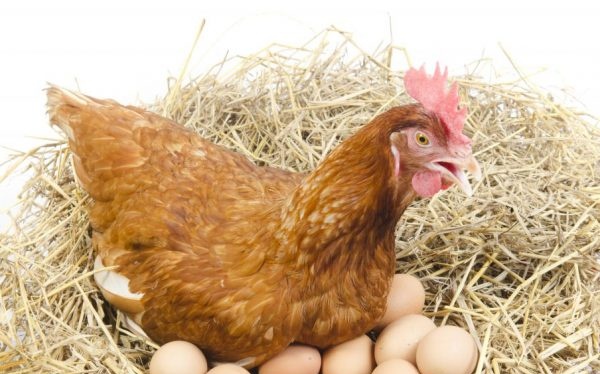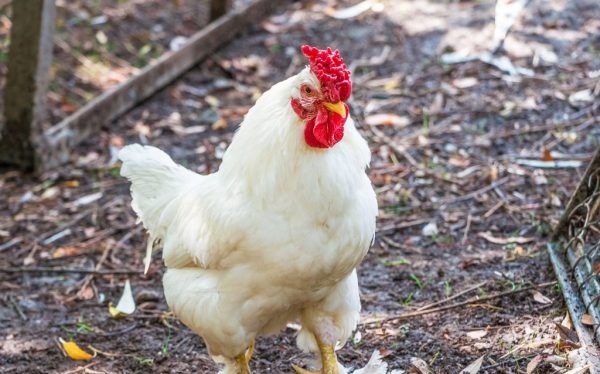Popular egg breeds of chickens
Egg breeds of chickens are bred for business or for their own pleasure. Interestingly, the first mentions of them were in Ancient Egypt. The progenitor is a wild chicken that still lives in the forests of Southeast Asia. It can be assumed that even then people realized the benefits of the content of this type.

Popular egg breeds of chickens
Currently, breeders are crossing the best egg-producing representatives, fixing the quality and selection rates. All of this is aimed at increasing productivity.
Common signs
All chickens of egg-laying breeds are similar to each other in certain characteristics.
- Low weight. Compared to meat, they weigh only 2-3 kg.
- The tail has long feathers and a large wingspan.
- Bright red scallop.
- The bird is quite active and mobile.
- Do not incubate eggs. As a result of selection, this ability has been lost. This is a significant disadvantage in breeding.
- They begin to lay eggs from 4-5 months.
- Accelerated metabolism. For this reason, chickens are characterized by an increased appetite. This affects the frequency of carrying eggs. Egg breeds are laid approximately every 25 hours, so their feed should be mineralized and high in calcium.
Advantages and disadvantages
Chickens of egg breeds have their own advantages and disadvantages.
Pros:
- high and fairly frequent egg production; a laying hen can produce up to 300-350 eggs per year;
- fairly large eggs with strong shells; from 80 to 100 g;
- good immunity, they do an excellent job with bird diseases and other viruses;
- unpretentious in care, able to survive in small winter frosts;
- non-aggressive, have a calm character.
For breeding, it is not advisable to choose elite breeds that are too demanding on conditions. They are quite capricious and violation of the rules of care significantly reduces egg production.
It is better to get home ones: they are unpretentious and more fertile.
Best egg breeds
By all parameters (the number of eggs per year and their size), Leghorn laying hens and their crosses: Hisex, Belaya Russkaya, take the leading place. They will help you quickly develop your farm and make a solid profit.
An important role in this is played by the fact that this bird is well adapted to cold weather, unpretentious in care, although it is demanding on the quality of feed.
Leghorn
Dominant egg direction. Birds first appeared in Italy at the end of the 19th century.
It is noteworthy that at the beginning this breed was not egg-bearing, only as a result of repeated hybridization with European chickens, Leghorn became the standard.
Usually - these are white thin birds with an elongated back. But there is also other plumage: brown, golden, cuckoo-partridge, spotted. In laying hens, the scallop is tilted to one side, and in roosters it stands straight.
Representatives of this breed are medium-sized: females up to 1.8 kg, and males up to 3 kg.
Chickens lay from 4-5 months, one year one can lay up to 350-400 eggs. According to statistics, they have the largest eggs. The recorded record is an egg weighing 450 g, in which there were 9 yolks.
Leghorns are unpretentious in care and food, adapted to the cold. Another feature of them is that they do not like noise.A loud or sudden sound makes them uneasy.
White russian

The breed is immune to disease
Leghorn's hybrid was the White Russian breed. From the founder, she inherited a drooping scallop and a lean body.
Chickens are small: females - up to 2 kg, and males - up to 2.5 kg. 220-250 eggs weighing up to 50 g are received per year.
The advantage of birds is frost resistance, undemanding to special conditions of keeping and immunity to diseases and viruses.
Active and productive egg production of laying hens is only one year old. After that, she lays fewer eggs, so then they are slaughtered.
Lohman Brown
This breed is the result of German breeders. These egg chickens are distinguished by their calmness, fearlessness, they perfectly coexist with other birds.
They have brown plumage with variegated blotches. Females lay brown eggs.
The advantages are increased egg production, ease of maintenance and high adaptability to new conditions.
Disadvantages:
- after 8 months, the productivity of chickens is greatly reduced, layers are sent to the slaughter;
- chickens of this breed cannot be bred on their own, because they do not produce offspring;
- whimsical in food: it is not recommended to give whole grains; it is desirable to enrich the feed with herbs, compound feed, carrots, turnips, corn.
Hisex
Dutch breeders have bred a cross of chickens - Hisex.
- White are chickens with white plumage. They resemble dwarfs, because they are very small, their weight is only 1.6 kg. But this does not affect performance in any way. Laying hens can produce up to 300 large and nutritious eggs per year.
- Brown - brown chickens are larger than their relatives. Their weight is up to 2.5 kg. They lay beautiful dark brown eggs weighing up to 50-60 g. They can also lay up to 300 eggs per year.
Both representatives are calm and level-headed. They can be grown both in cages and free-range.
Minorca
If you want to get not only a rich income, but also aesthetic pleasure, then you are invited to breed the Spanish Minorca chicken breed.
It is a graceful bird with black plumage and bluish tint. Has a bright scarlet comb and white earrings. Basically, these individuals are small: from 1 to 2.5 kg.
Productive indicators are average: up to 200 eggs per year from one layer. But the eggs are white, large, weighing up to 100 g.
In leaving, they are not whimsical, but they are afraid of cold and draft. Therefore, it is advisable to make warm chicken coops for them. And young animals are generally not recommended to be walked on the street, because chicks are susceptible to diseases.
With the onset of cold weather, the bird needs to rub the scallop with fat so that it does not freeze. Greens, vegetables, compound feed are added to the feed.
Breeders of this breed need to know that the Minorca is rather shy. Therefore, you need to avoid harsh sounds, noise. They keep strangers away from them.
Tetra SL
This hybrid is a product of Hungarian breeders. It is easy to recognize chickens by gender: males are white, and females are fawn.
Individuals are small - up to 2.5 kg. For a year, the chicken gives up to 300 brown eggs and weighing up to 65 g.
The advantage of the breed is considered to be high egg production, adaptability to keeping conditions, and low incidence.
The water needs to be changed daily. And also you need to make sure that the food is not spoiled. Trace elements and calcium must be added to it. When the calcium content is low, the chicken begins to eat its own eggs.
Conclusion
Of course, there are a huge number of egg chickens. Everyone can choose the most suitable from this variety.
The main rule in this case is to study well the features and characteristics of a particular breed, so that chicken breeding brings you pleasure and joy.


